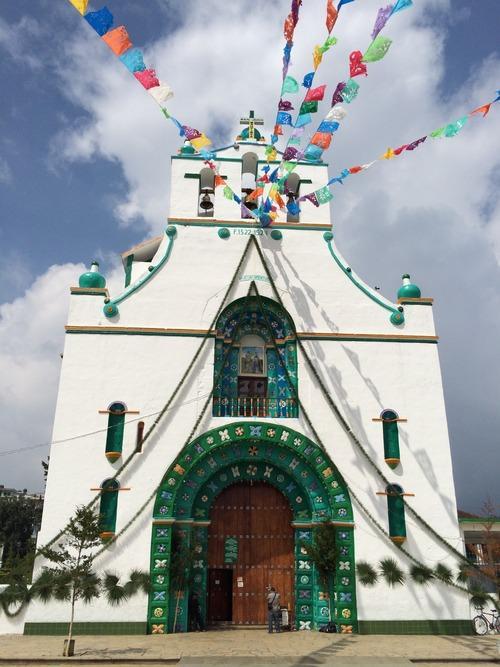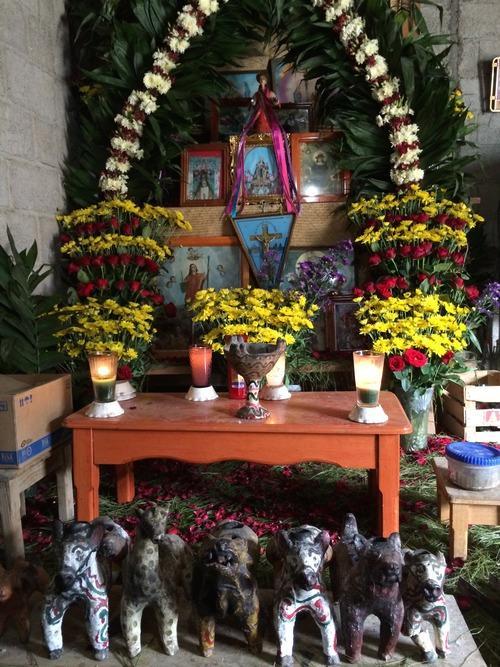To many, Mexico is a land of beach resorts, cheap tequila, and quickie vacations. But for those of us who crave history and culture, it is the land of the Mayans — who, although their glory days may have ended with the Spanish invasion, are still alive and well and living just as they did for hundreds of years in southern Mexico.
Twenty minutes outside of San Cristobal de las Casas, in the highlands of Chiapas, Mexico, is the small town of San Juan Chamula (Chamula). The town looks like many others across Mexico — it is small and quaint and has the usual assortment of touristy shops, taco stands, and farmacias (pharmacies). But there is one thing Chamula has that no other city in the world has: a Roman Catholic church with live sacrifices several times a day.
 St. John the Baptist church. (Photo: Paula Froelich)
St. John the Baptist church. (Photo: Paula Froelich)
The church, St. John the Baptist, is white with turquoise trim and sits in the main square in Chamula. It looks pretty normal — until you get inside. The floor is covered with pine needles, except in small areas that have been cleared away for “healings.”
"This church is a Mayan church," my guide, Gaby Gudino, said. "There is no priest; instead there are traditional Mayan healers, who help with physical or spiritual ailments."
The day I visited, there were nine healings, which involved the healer (a spiritual leader), who could be a man or a woman, lining up several rows of candles, lighting them, chanting, throwing alcohol on the fire, and eventually pulling a (live) chicken out of a burlap sack and breaking its neck.
"There always has to be a sacrifice," Gaby said as one chicken peeked out of a sack and gave me the stink eye. "And these days it’s chickens."
Not that the church is fully pagan — statues of saints line the walls, and there is an altar to St. John — but it is fully Mayan.
 An altar, similar to one at St. John the Baptist, inside the house of a church elder, with Catholic and pagan symbols (Photo: Paula Froelich)
An altar, similar to one at St. John the Baptist, inside the house of a church elder, with Catholic and pagan symbols (Photo: Paula Froelich)
"When the Spanish came, the Mayans readily accepted Catholicism because it looked just like their religion," Gaby said. "They had the Mayan cross, and many of the Catholic stories were similar to their own. So ‘converting’ wasn’t a big issue. They adopted the saints, but their religion has stayed the same."

No comments:
Post a Comment